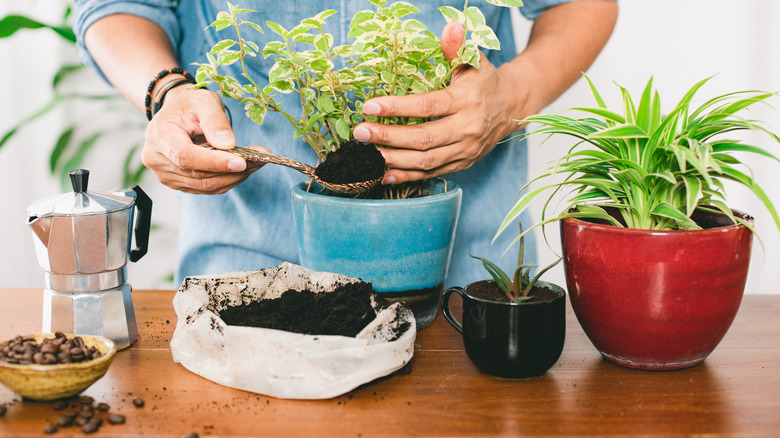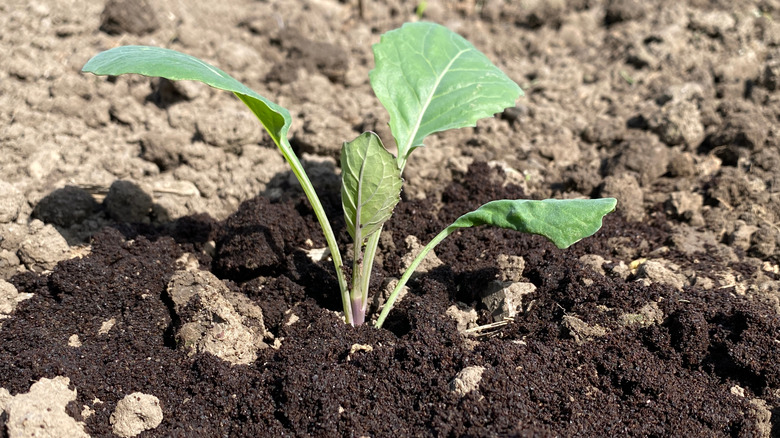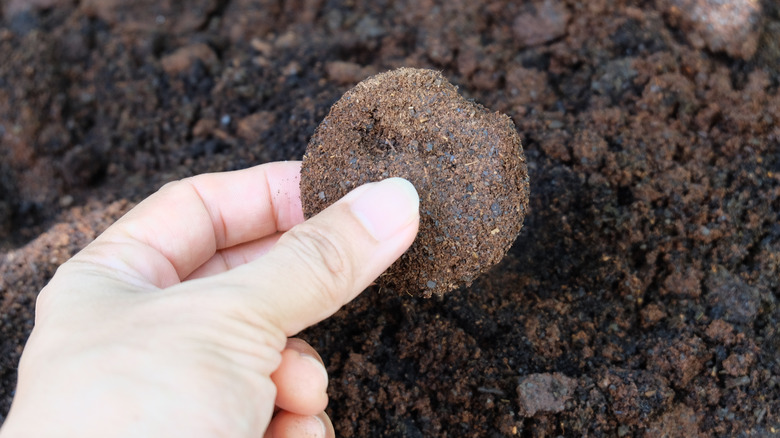If You're Not Using Coffee Grounds In Your Garden, You're Doing It Wrong
After you've finished your morning cup of coffee and are energized enough to take on the day, you probably don't give the leftover coffee grounds a second thought. Next time you brew a cup, though, hold onto the grounds, as coffee is the gift that keeps on giving. Not only does it transform us from our zombie states into functioning adults every morning, but it can be an incredible nutrient for your garden (per The Spruce).
Whether you're a beginner gardener or your green thumb is well-established, it's always helpful to learn new ways to improve the health of your soil. Bonus points go to this solution being easy, economical, and eco-conscious. Talk about a win-win! Even if you're not a coffee drinker, don't despair; lots of coffee shops are happy to give away a bag of their used grounds if you ask — some even pack them up and set them out on the counter daily.
Give your soil a boost
Gardening Know How explains that there are a few different ways you can incorporate coffee grounds into your soil, which can improve your soil's nitrogen levels and deter pests. Your first option is to add the coffee grounds to your compost. As soon as you toss them onto your compost pile, they'll get to work improving the nitrogen levels. So once you add the compost to a hole you're digging or mix it in with your mulch, the extra nitrogen will reach your plants. Nitrogen is necessary for healthy plant growth because it's a key component of chlorophyll production, says the Soil Science Society of America.
If you don't do much composting, Gardening Know How says many people choose to add the grounds directly to their soil in the garden, essentially treating it as a fertilizer. This is believed to help with drainage and aeration of the soil. If you go this route, just make sure to spread the grounds evenly through the soil with a rake so they don't all clump together in one spot.
Coffee grounds can provide all-natural pest control against slugs and snails, especially to extra susceptible plants like hostas. Try sprinkling a ring of grounds around the perimeter of the plants you want to safeguard. Whether it's the caffeine the pests don't like or the gritty texture of the grounds, it helps to have an extra layer of protection.
When you shouldn't add grounds
It's important to note that coffee grounds are acidic, so this is great if you're growing plants that love acidic soil. Some popular examples are hydrangeas, azaleas, and blueberries, according to Gardening Know How. However, not all plants respond well to increased acidity in their soil. It can stunt their growth and impact seed germination, cautions HGTV. Don't add coffee grounds to your garden if you're growing tomatoes, geraniums, alfalfa, or clover. And before you decide to mix the grounds into your soil, research all the plants you're growing to ensure they don't respond poorly to increased acidity.
Too much of a good thing can quickly turn into a bad thing. Until you know how your soil and plants will react, use the coffee grounds sparingly. As mentioned above, you always want to spread them evenly throughout the soil and never allow them to clump all in one place. It may take a little trial and error, but then you'll be on your way to rich soil and healthier plants.


